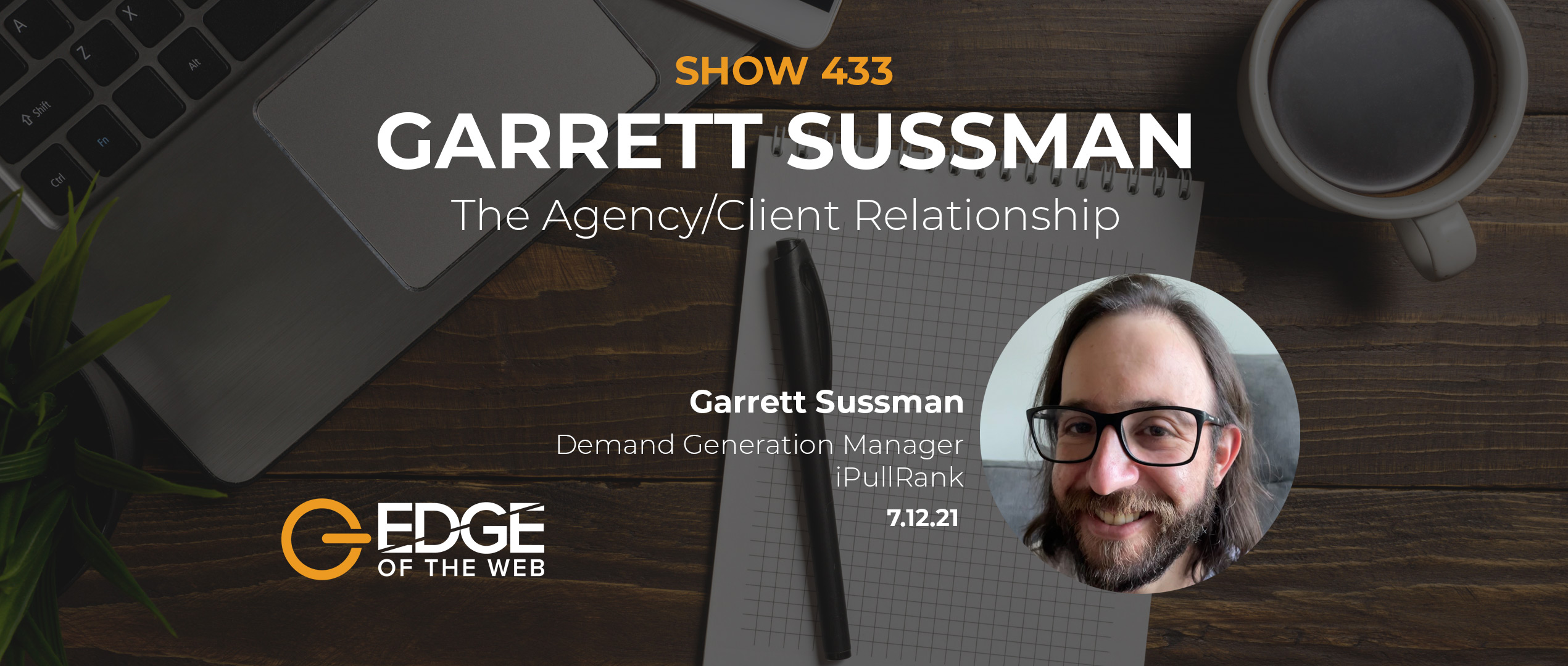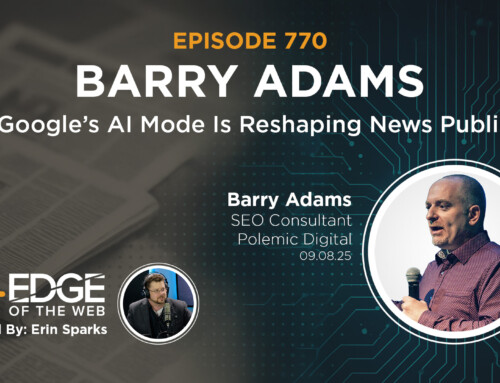What is your Client’s Love Language?
- [00:03:43] 100 podcast episodes in a year! How did Garrett stay sane through that?
- [00:06:00] Garrett’s history – coming from teaching to the start-up culture.
- [00:09:14] Hiring internal SEOs. The challenges of the industry
- [00:11:12] The evolving nature of the target: Google. A completely different paradigm.
- [00:13:58] Supplementing your in-house with agency talent
- [00:18:24] Experience matters in the Agency/Client relationship. Broken trust is the major pitfall
- [00:23:14] What are the key breakdowns inside of the agency, client relationship?
What are the SEO love languages, and how does it affect the client/agency relationship? Garrett Sussman discusses digital marketing agencies within the SEO industry and how to make client/agency relationships work.
A Look at Garrett Sussman
Garrett Sussman is the Demand Generation Manager at iPullRank. He has ten years of experience in digital marketing. He has previously worked as the Head of Marketing at a development firm and an Affiliate Marketing Manager. He has worked with a reputation management service for agencies to monitor client’s reviews. Sussman has had a long run in developing resources for agencies. He has also contributed to thought leadership with his podcast, Agency Ahead by Traject, where he has had 100 episodes in just a year with several well-known figures as guests.
After college, Sussman joined Teach for America and was teaching in Louisiana when Hurricane Katrine hit. After that, he felt a bit burned out and found himself obsessed with startup culture. After heading to San Francisco, he stumbled upon 99designs, a graphic design marketplace. Sussman started focusing on agencies and became interested in how agencies could get graphic design work done for clients. He began to learn about what agencies were looking for and their needs and ability to match requirements.
Sussman and His Sanity Through 100 Podcast Episodes
For Sussman, his podcast is easy to create because it’s a guilty pleasure for him. It’s an opportunity to geek out over marketing channels and strategies with respected people in the industry. His podcast has led to his current position at iPullRank after having spoken with many tech SEOs. Sussman always found tech SEO fascinating regarding its influence on ranking. He’s found that SEOs need analytic skills to understand concepts but also need creative skills. He’s been able to explore dimensions of how digital marketing agencies need to engage in these skillsets while also learning the discipline and considering relationships with clients.
The Challenges of Client Relationships
It’s been found that companies prefer hiring an agency rather than hire an in-house marketing employee for SEO. Part of the challenge with SEO is the skillsets needed. A lot of people are trying to hire in-house due to the industry evolving. However, there aren’t many academic programs for SEO or standalone certifications. The industry doesn’t have the workforce that companies are looking for. It’s tricky to break into the SEO industry, but it is accessible to everyone. SEO is inherently edgy and constantly trying to experiment to learn what is and isn’t working. Google is also evolving, so SEOs question where to invest their time to rank for certain types of content. There is an ever-changing nature of search intent, and Google makes things even harder for the SEO industry. A marriage of SEO skills and content skills is becoming more of a requirement for in-house SEO positions.
The State of Understanding SEO and Its Complexities
SEO today is not just technical; it is contextual. If a company hires someone for an in-house role in the SEO market, how can the company know whether they have contemporary skills instead of the technical skills from ten years ago? The client doesn’t know the difference between the past market and the modern market. Therefore it can be more beneficial to hire an agency for its supplemental efforts. The larger a website, the larger the enterprise, the more there is to do. For example, with the surge of Core Web Vitals, it can be difficult for an in-house team or individual to handle. The agency can offer supplemental skills, whether from insights or to execution implementation. This hybrid model can give an additional set of eyes, as well as insurance. The agency can ensure that the internal resources are being presented with contemporary knowledge. Clients may not understand that taking an individual out of the competitive waters to optimize content for their website specifically, they are unplugged from the learning experience in all vertical markets and industries. The ability to couple the individual with the agency model is ensuring longevity and skills for that individual. In addition, when elements of nuances between industries or types of businesses are added, the productivity and value an agency brings are amplified. Integration can be beneficial in many ways.
Potential Pitfalls of the Agency/Client Hybrid Model
When a company brings in an agency, there will always be a chance of issues. The client/agency relationship is all about trust and dependability. Suppose trust is broken early on, whether due to false information or technical mistakes, trust is lost, which is a significant pitfall. This can make it hard to recover trust for that agency and all future agencies that the client works with because a company is likely to try multiple agencies.
Poor communication and lack of understanding on the client’s part can also cause issues. There are so many opportunities for discovery between agencies and clients. Therefore it is critical to determine expectations early on. These expectations could regard communication style or what the client expects the agency to provide. The agency may need to act as an educator. Agencies should continue to reflect on their communication, value, and how they interact with the client. Different clients need different solutions, and there is a continual evolution of the relationship with clients.
Key Breakdowns of Agency/Client Relationship
One critical breakdown, according to Sussman, is the setting of expectations, specifically within the contract regarding a set scope and the contingencies if the project exceeds the scope. Communication is also a major breakdown. All clients have different communication styles or SEO love languages. The client can become upset if the agency is not on the same page as them. On the other side, agencies should set boundaries for themselves. Agencies want to go above and beyond, but it is fair to set boundaries and response time expectations. This also includes stepping back if the agency cannot meet the client’s needs and expectations. When you have these sorts of conversations initially, it can save a lot of headaches in the long run.






















